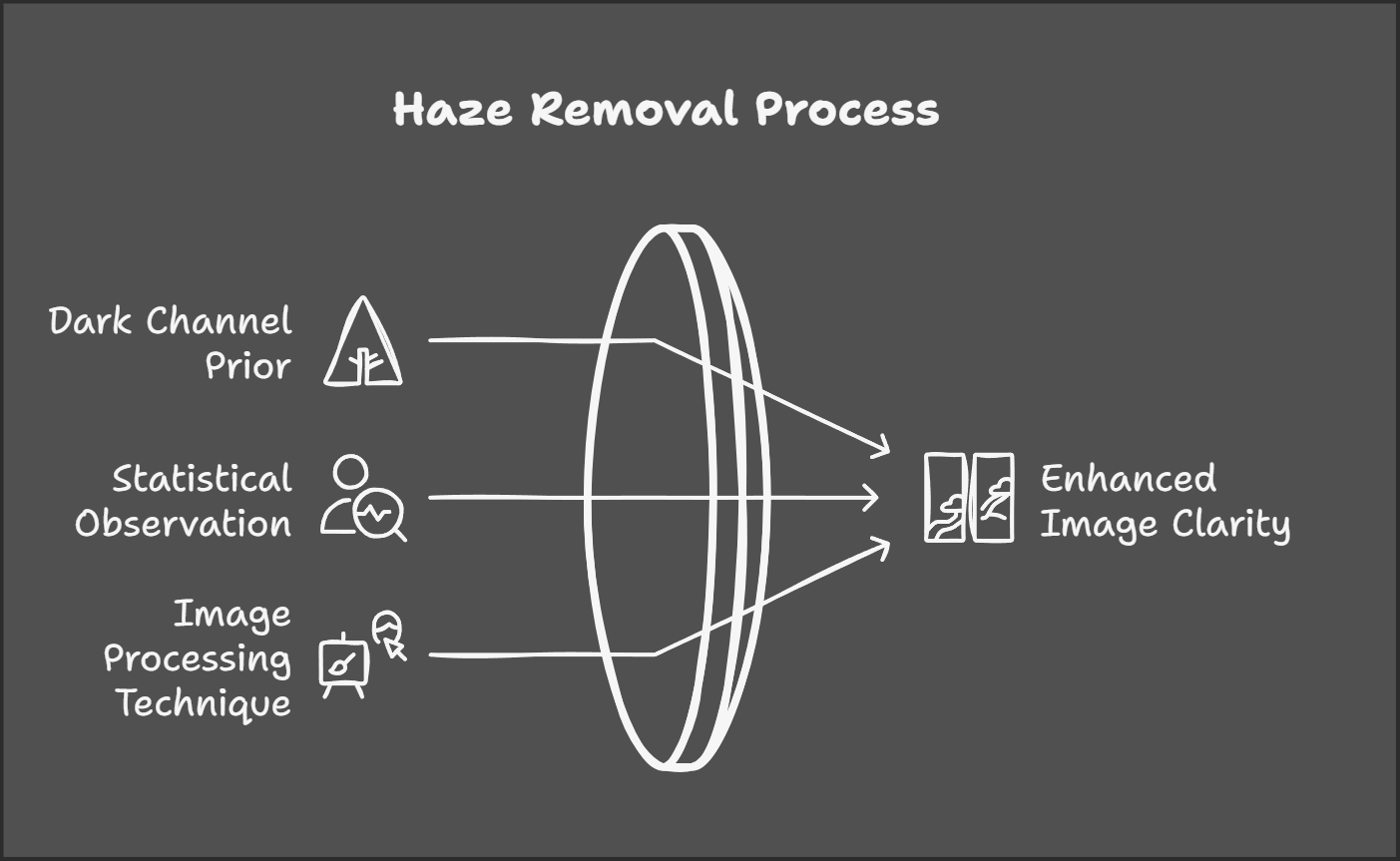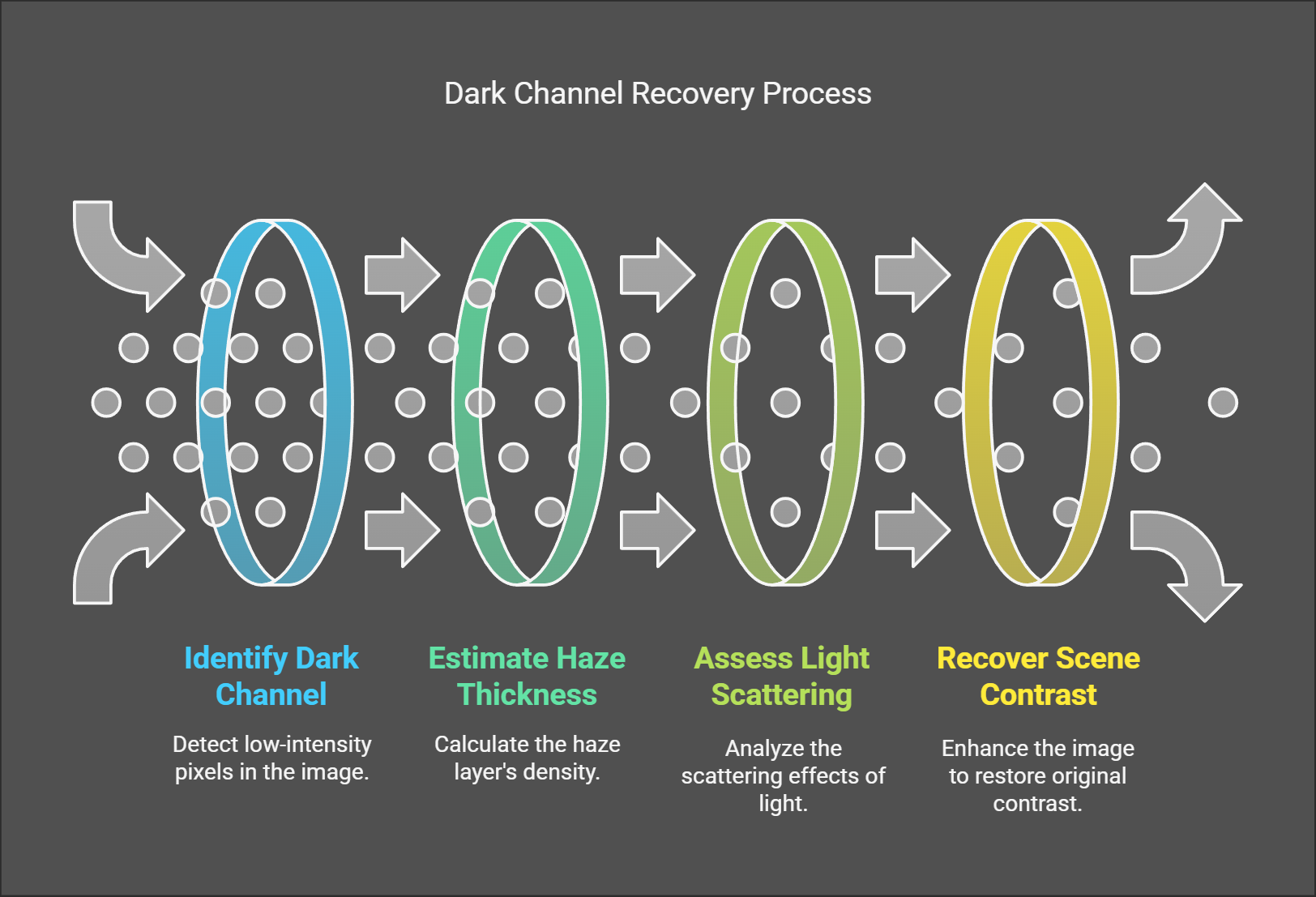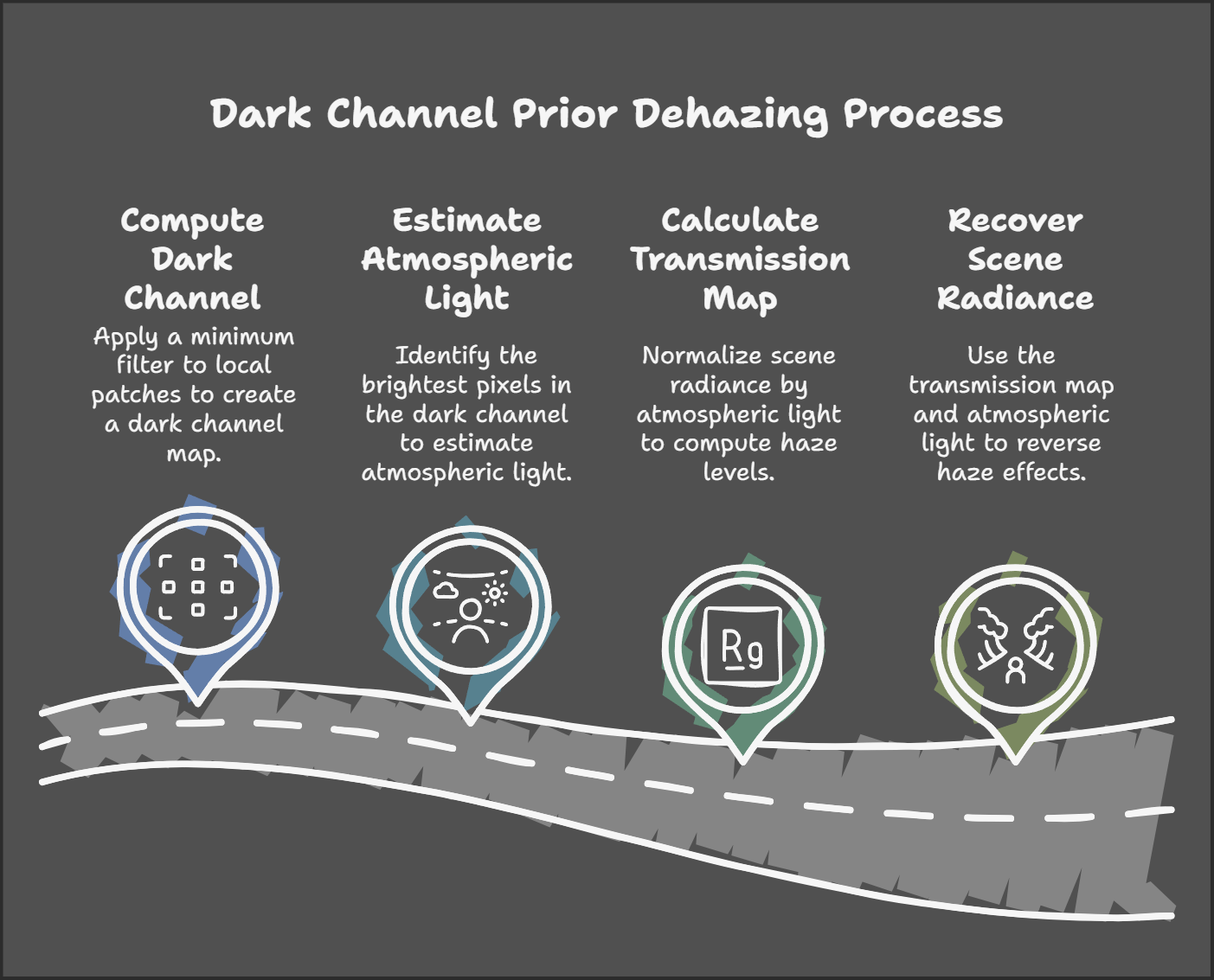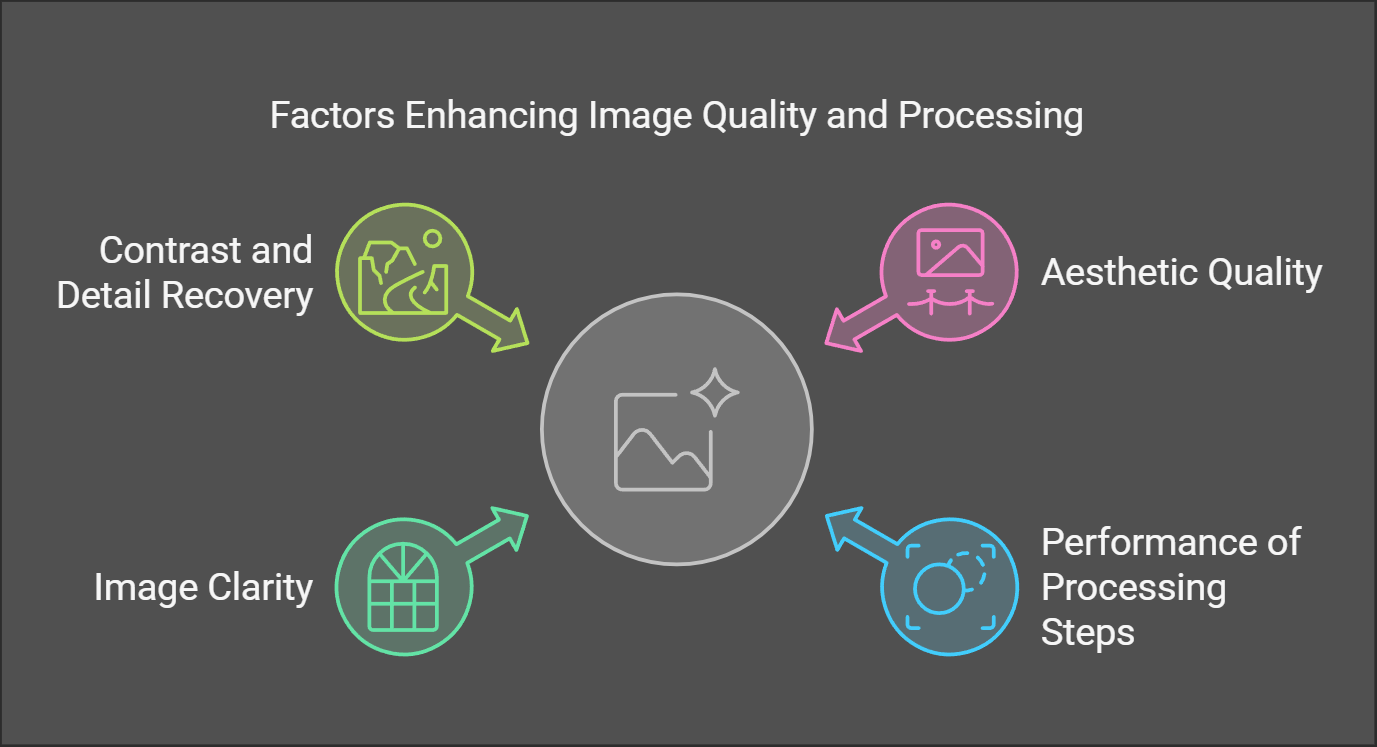Dark Channel Prior Dehazing Algorithm Explained
Introduction
The Dark Channel Prior dehazing algorithm is a powerful technique employed in image processing to remove haze from photographs, enhancing their clarity and contrast. Originally introduced for single image haze removal, it exploits a statistical observation about outdoor images.

Theoretical Background
The algorithm is built on the assumption that in most non-hazy outdoor images, at least one color channel has some pixels with very low intensity in local patches, which constitutes the "dark channel." In hazy images, this dark channel is obscured by the atmospheric light and haze. By estimating the haze's thickness and the light scattering, the algorithm can recover the scene's original contrast.

Algorithm Steps
- Compute the Dark Channel: A minimum filter is applied to each pixel’s local patch to generate the dark channel map.
- Estimate Atmospheric Light: The brightest pixels in the dark channel are used to estimate the atmospheric light.
- Calculate Transmission Map: The scene radiance is normalized by the atmospheric light to compute how much haze is present.
- Recover the Scene Radiance: Using the transmission map and the atmospheric light, the original image is recovered by reversing the effects of the haze.

Benefits and Use Cases
The dehazing algorithm not only improves aesthetic quality but also enhances the performance of further processing steps like object detection and scene understanding. By reducing the visual noise introduced by haze, this approach is essential for outdoor surveillance, autonomous driving, and professional photography.
- Increased image clarity
- Enhanced contrast and detail recovery

Conclusion
The Dark Channel Prior dehazing algorithm provides a mathematically sound and effective method for haze removal, revitalizing images with improved clarity and detail. Its practical applications span multiple fields and continue to be the subject of research and development.
If you are exploring state-of-the-art image processing techniques, dehazing using the dark channel prior offers a robust solution that balances computational efficiency with visual quality.